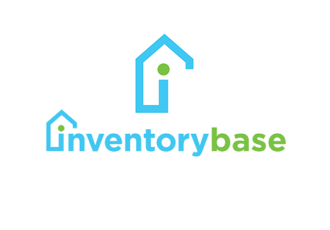Considerations before deciding to rent property to tenants as a career
Over the decades numerous people in my circle have become ‘accidental landlords’ either through moving in with a partner or through inheritance etc. Some have become Landlords in a more planned way as part of a pension strategy, or to generate a second income. When these friends ask me what is involved in becoming a Landlord, knowing I was one starting back in the 1980’s, my eyes begin to roll skyward as there are now so many things to consider.
Luckily, I came across a really great article written earlier this year by someone I consider to be at the pinnacle of her game, Sian Hemming Metcalfe – Operations Director at Inventory Base who provides a great overview of what being a Landlord actually means.
‘Being a landlord can often feel like a daunting task. With an array of legislation and procedures to follow, it’s easy to see why many landlords wish for a helping hand—a guide to ensure they stay compliant and foster positive relationships with tenants. Thankfully, such a resource exists, designed to assist landlords in navigating these challenges effectively.
The Portsmouth & District Private Landlord’s Association (PDPLA), established in 1985, has come to the rescue by creating a comprehensive landlord checklist tailored for renting properties in the UK. This guide summarizes the checklist, which outlines crucial documents, tasks for different stages of tenancy, and helpful resources for landlords. While this checklist serves as a valuable tool, it’s important to note that it doesn’t cover every scenario and shouldn’t be taken as legal advice.
Proper documentation is key to protecting both landlords and tenants, ensuring safety and legal compliance. A well-prepared landlord can avoid potential fines or legal disputes, allowing for a smoother and more secure rental experience. However, before diving into the checklist, it’s essential to confirm that you are legally permitted to rent out your property. Some mortgage agreements and buy-to-let terms may impose restrictions on who can rent the property, so it’s crucial to verify these details first.
To meet legal obligations and provide a safe living environment, landlords must have certain documents in place. These include buildings insurance, landlord insurance, a gas safety certificate, and an energy performance certificate (EPC) with a minimum rating of ‘E’. Additionally, landlords need an Electrical Installation Condition Report (EICR) and other certificates relevant to any electrical installations or modifications, such as an Electrical Installation Certificate (EIC) or a Minor Electrical Installation Work Certificate (MEIWC).
Equally important are the documents that outline the terms of tenancy and protect both parties involved. Landlords should have an Assured Shorthold Tenancy Agreement (AST), a guarantors agreement if required, and written confirmation from tenants agreeing to receive documents by email. It’s also necessary to provide proof of the tenant’s right to rent, such as a passport copy, and give them a copy of the “How to Rent – The Checklist for Renting in England.” Furthermore, landlords must supply a certificate of deposit protection, a GDPR privacy notice, and maintain an inventory and communication log with the tenant.

To maintain best practices, landlords should also manage their financial and data-related obligations carefully. This includes registering for HMRC Self-Assessment Tax Return, keeping detailed accounts of all transactions, and completing annual tax returns. Additionally, landlords need to register with the Information Commissioner’s Office (ICO) and conduct a GDPR data audit to ensure compliance with data protection laws.
Starting a tenancy on the right foot can lead to a smooth and successful rental experience. Before tenants move in, landlords should ensure the property is clean and, if necessary, redecorated. It’s important to verify that the EPC and Gas Safety Certificates are up to date, conduct electrical safety checks, and install necessary smoke and carbon monoxide alarms.
Landlords should also perform risk assessments for fire, Legionella, and asbestos, update or obtain appropriate insurance, prepare an inventory, and take photographs to help with advertising. Selecting tenants through reputable channels and agents is another critical step to ensuring a successful tenancy.
The beginning of a tenancy involves several key steps to ensure everything runs smoothly. Landlords need to reference the tenant, create a jointly signed AST, and gather all necessary documentation, including proof of the tenant’s right to rent. Collecting deposits and the first month’s rent, setting up payment arrangements, notifying relevant authorities, and protecting the deposit within 30 days are all essential actions that need to be taken during this phase.
Once tenants are settled in, landlords must focus on maintaining the property and ensuring clear communication. It’s important to provide tenants with updated copies of legal documents, such as the “How to Rent” guide and Gas Safety Certificates. Keeping a detailed log of all communications with tenants, responding promptly to any issues or complaints, and conducting periodic property inspections with proper notice are all vital components of successful tenancy management.
When a tenant decides to move out, landlords should follow a structured process to ensure everything is handled smoothly. Serving the appropriate notice, beginning the search for new tenants, and conducting a thorough inspection of the property are key steps. Landlords should also take meter readings, check the inventory for any deductions, and return the tenant’s deposit, ensuring that any deductions are clearly documented and agreed upon.
The PDPLA checklist is an invaluable resource for landlords, whether they are new to the role or experienced in property management. Anyone looking to streamline their processes further, tools like Inventory Base offer features to manage and organise forms and checklists efficiently.’
For more information and to see how Inventory Base can support your property management, just schedule a demo with one of their team members today using this LINK.
Andrew Stanton Founder & Editor of 'PROPTECH-X' where his insights, connections, analysis and commentary on proptech and real estate are based on writing 1.3M words annually. Plus meeting 1,000 Proptech founders, critiquing 400 decks and having had 130 clients as CEO of 'PROPTECH-PR', a consultancy for Proptech founders seeking growth and exit strategies. He also acts as an advisory for major global real estate companies on sales, acquisitions, market positioning & operations. With 200K followers & readers, he is the 'Proptech Realestate Influencer.'












